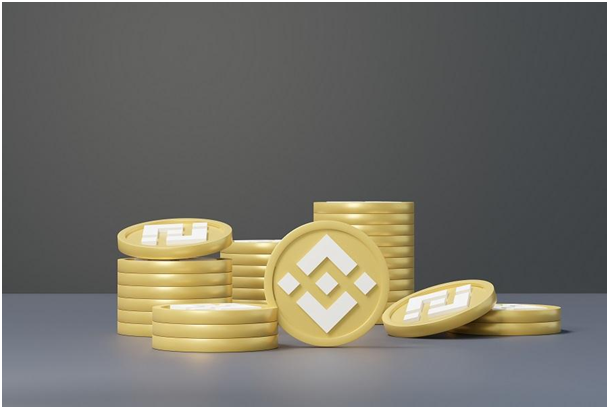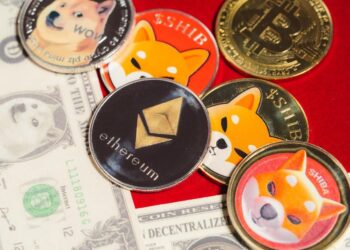BNB is surely a familiar name for anyone who has spent enough time in the crypto world and has come to learn about the projects that are part of this young market. Some may also know that BNB, which stands for “Build and Build,” was once known as Binance Coin but was later rebranded to better reflect its broader purpose and the developing company’s ethos.
Regardless of its name, the token has solidified its status as one of the most prominent digital assets in the market. With the fifth-largest market cap in the cryptocurrency space, BNB has seen impressive growth since its debut. Its consistent presence in headlines and trading platforms has made it a favorite among both seasoned and new investors.
Still, popularity alone isn’t a solid reason to invest. Before adding any asset to a portfolio, it’s essential to understand its purpose, structure, origins, and potential. This informed approach helps mitigate risks and improves the chances of achieving long-term investment success.
Genesis
Launched in 2017 through an Initial Coin Offering (ICO), BNB has experienced remarkable price increases, reaching an all-time high of $793.35. The token’s roots are closely tied to Binance, the world’s leading crypto exchange by trading volume. Developed by Changpeng Zhao, Binance’s co-founder and former CEO, BNB was introduced to generate capital for the upcoming exchange. Its ICO raised $15 million within a week, which was largely allocated toward platform development and promotional activities.
Initially, BNB operated as an ERC-20 token on the Ethereum network. It served practical purposes like covering transaction (gas) fees on Binance and offering trading discounts. The token was launched with a maximum supply of 200 million units, with 50% made available during the ICO. It operates under a Proof of Stake (PoS) consensus model and employs a dual-token burning system—some tokens are destroyed quarterly, and others are burned based on gas fee usage, gradually reducing the overall supply. Eventually, this mechanism will cause the total BNB supply to drop to 100 million units, which is half of the initial amount.
In 2019, Binance introduced its own blockchain, the Binance Chain—now called the BNB Beacon Chain—and transitioned all BNB tokens to this network. The following year, the Binance Smart Chain (now BNB Smart Chain) was unveiled, adding smart contract functionality and enabling the development of decentralized applications (dApps).
Use cases
BNB isn’t just a utility token that offers trading fee discounts on Binance; it powers a wide range of activities within and beyond the platform. Its functionality has grown significantly, especially after the development of the BNB Beacon Chain and BNB Smart Chain. In addition to reducing trading fees and covering network transaction costs, BNB plays a central role in:
- Participating in token launches via Launchpools and Hodler Airdrops. Those who are interested can lock up their tokens and be rewarded with tokens awarded by certain projects.
- Supporting decentralized finance (DeFi) platforms and smart contracts, as BNB holders can engage with a variety of DeFi projects hosted on the BNB Chain.
- Making purchases in NFT marketplaces
- Staking, which allows users to earn passive income and vote on network decisions
- Facilitating real-world payments through partnerships with global vendors
Its integration into the broader crypto and payment ecosystem continues to expand, underlining its utility and relevance.
BNB’s journey through price volatility
Like all cryptocurrencies, BNB has been subject to significant price swings. The token launched at just $0.10 in 2017 but quickly gained traction, ending that year at around $8. The following year saw a downturn in the crypto market, with BNB trading between $5 and $15. It bounced back in 2019 to reach $39 before falling back to $13 by year’s end.
The year 2020 brought steady growth, with BNB climbing to around $37. In 2021, the token surged dramatically, peaking at over $690. Over the next couple of years, BNB fluctuated between $200 and $400, reflecting broader market trends. Then, in December 2024, it hit its latest high of $793.35. Since then, it has slightly receded and currently trades at approximately $559.
Should you consider investing in BNB?
BNB’s price history reveals a pattern of resilience and growth, marking it as one of the longer-standing and more reliable assets in the volatile world of digital currencies. However, it’s crucial to remember that past performance doesn’t guarantee future results.
When evaluating BNB’s investment appeal, two primary factors stand out. First, the token is deeply embedded within the Binance ecosystem, which continues to grow and innovate. As Binance enhances its platform and introduces new features, BNB benefits from these developments, reinforcing its market position.
Second, the token’s practical applications are a major strength. Its broad utility, from DeFi and staking to payment integration, supports its adoption and potential demand over time.
Nonetheless, there are caveats. Critics highlight concerns about centralization, given BNB’s close ties to Binance. This could lead to governance challenges or platform-related risks, such as fee increases or scalability limitations. Additionally, as with any crypto asset, market fluctuations can cause abrupt changes in value, which could negatively impact investor returns.
Final Thoughts
BNB stands out as more than just another cryptocurrency—it’s a fundamental part of the Binance ecosystem and a well-established player in the digital asset space. While it offers promising potential and a wide range of uses, it’s essential for investors to weigh both the opportunities and the risks. Whether you’re considering investing or simply expanding your understanding of the crypto market, BNB remains a token worth watching.







